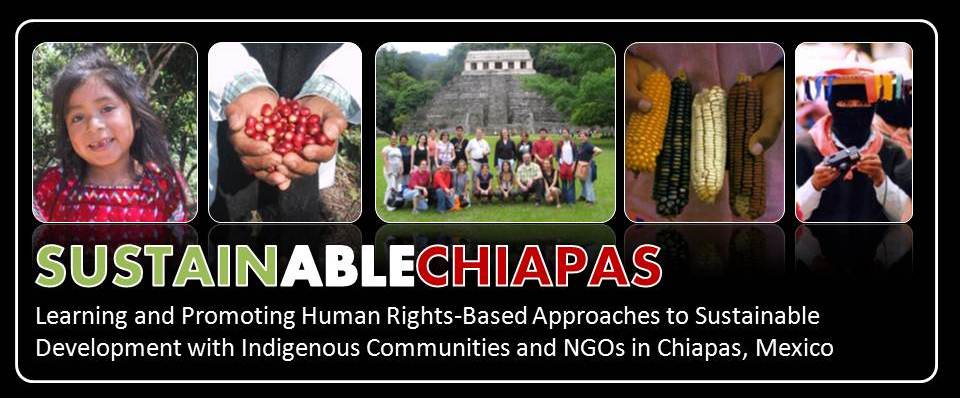Sustainable Development, as described by the United Nation’s Brundtland Report is "Development that meets the needs of the present without compromising the ability of future generations to meet their own needs[1]." This description creates more frustration than clarity because it is so vague. If I were to tell someone that they should live by what they need, so that their grandchildren will be able to live by their needs, I would get a few blank stares and calls to clarify. As Castro also finds, scholars cannot agree on the perfect definition.[2]
Now back to Chiapas, I feel that sustainable development was/is there in the concept of culture and identity. The Zapatista Rebellions of1994, brought international attention, and with it came international tourism. Tourists come from all over the world to see the Modern Mayas, the ancient Mayan ruins, consume the best coffee in the world, and see how the indigenous communities live. This led to many foreigners staying and bringing their version o
 f community into San Cristobal. In one block, you can have Lebanese falafels, Argentine steak, or if you miss American fast food, then have a Whopper from Burger King. But the gentrification has created tension. There is graffiti that states “Putos Hippies” and “Los terroristas son los turistas.” S
f community into San Cristobal. In one block, you can have Lebanese falafels, Argentine steak, or if you miss American fast food, then have a Whopper from Burger King. But the gentrification has created tension. There is graffiti that states “Putos Hippies” and “Los terroristas son los turistas.” S an Cristobal becomes two very different cities; one that is still colonial and you can get great coffee, while looking at local art, and one where the Tzotzil people hold mid-night market to sell their produce.
an Cristobal becomes two very different cities; one that is still colonial and you can get great coffee, while looking at local art, and one where the Tzotzil people hold mid-night market to sell their produce. Upon arrival to San Cristobal de Las Casas, you see bright colors and gorgeous patterns abound, from the Tzotzil women selling their shawls, scarves, and Zapatista woolen dolls. Of course, you feel obliged to buy, and the products that they are selling just draw you in. I personally bought three shawls, a Zapatista doll, a woolen monkey, and the warmest purple pullover. The introduction of the Maya culture via textiles brings income to these women, but it also creates a new obstacle. While selling the shawls, income is being brought to the indigenous textile; it also create
 s a frozen state on development. What I mean to say is that in my time in Chiapas, there are only so many varieties in patterned scarves that a community can sell.
s a frozen state on development. What I mean to say is that in my time in Chiapas, there are only so many varieties in patterned scarves that a community can sell.Sustainable development in Chiapas has multiple obstacles: gentrification, tourism, and the largest obstacle, the Molotov Chiapaneco. The Molotov Chiapaneco consists of poverty, corrupt government, and narco-trafficking mafias, this cocktail is the hardest obstacle for development in Chiapas. It is one of the reasons that I am frustrated because there is so little that I can do to stop narco-trafficking, there is nothing I can do to stop corrupt government, just look at what happened in Arizona, but I can help in someway alleviate poverty. This leads me to more frustration because I do not know how I can help to do so. Therefore my final thought, is that I want to help, I just need assistance to find my calling to do so, I want to start hosing down the damage caused by the Molotov Chiapaneco.

